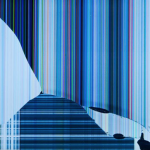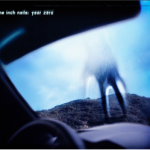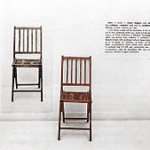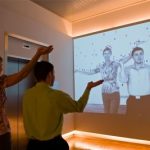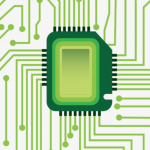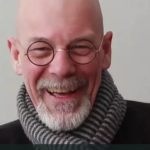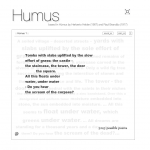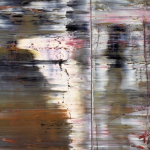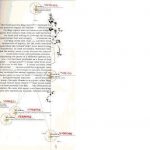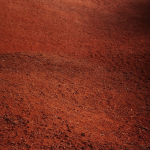Lift This End: Electronic Literature in a Blue Light
Stuart MoulthropTaking recent writings-of-internet as test cases, Stuart Moulthrop demonstrates the folly of deploying modernist compositional models, even avant-garde theories of citational and conceptual poetry recently popularized by Kenneth Goldsmith and the Flarf poets, to read born-digital writing. Though it may be fun, it's ultimately futile to interpret the contingent output of an "interface in process" as a poem existing in a fixed, terminable state. Perhaps, then, interfacing with databases is becoming integral to not just electronic literature and digital poetics but all forms of literary study and practice?
The Politics of Plasticity: Neoliberalism and the Digital Text
Davin HeckmanIn this essay, Davin Heckman argues that works of electronic literature often provide occasions for cultivating attention in a mutable cultural landscape. Through readings of John Cayley, YHCHI, Rob Wittig, and Richard Holeton, Heckman points to a poetics of technical estrangement by which new media is opened up to deliberative reading, and thus presents contemporary readers with the opportunity to develop critical practices appropriate for the conditions of neoliberalism.
Revealing Noise: The Conspiracy of Presence in Alternate Reality Aesthetics
Adam PilkeyAdam Pilkey argues that the ARG Year Zero's use of "revealing noise" allows and encourages the audience to help in the building of the narrative by becoming participants in a conspiracy theory within the ARG. Pilkey argues that "The Presence" found in the Nine Inch Nails album and corresponding ARG, Year Zero, symbolizes and denies a truth, which in turn provides a means that furthers the resources that constructs conspiracy theories in this alternate reality.
Post-Digital Writing
Florian CramerFlorian Cramer's essay reframes debates on electronic literature within larger cultural developments in writing and publishing. On the one hand, he shows the commitment of the field of electronic literature - as found in universities or in organizations such as the ELO - to a "literary" intermedia writing for electronic (display) media. On the other hand, he emphasizes a wide-ranging post-digital poetics defined by a DIY media practice rather than the choice of a particular medium, a poetics which is broadly orientated towards writing rather than literature. At stake in this opposition is the larger question of literary studies in a world of creative digital industries.
The Assimilation of Text by Image
David (Jhave) JohnstonJhave's wide-ranging history and prospectus alerts us to cognitive, material, and mythic dimensions of the nexus of image and text. By showing how text evolved into image, the essay traces a new malleability, dimensionality, and embodiment of writing. The contemporary image-text is a quasi-object with experimental literary qualities as well as an almost organic media dynamism.
Language as Gameplay: toward a vocabulary for describing works of electronic literature
Brian Kim StefansJust as Walter Benjamin declared that all "great works of literature either dissolve a genre or invent one," Brian Kim Stefans argues that all successful works of electronic literature are sui generis and invent their own genre. There can be a vocabulary for this invention, however, and Stefans sets out “The Holy Grails of Electronic Literature,” “Six Varieties of Crisis,” and the “Surrealist Fortune Cookie.” Through these concepts, he describes the formal challenges, reading experiences, and fundamental textual units of electronic literature.
Review of Karin Hoepker’s No Maps for These Territories: Cities, Spaces, and Archeologies of the Future in William Gibson
Alex LinkThe good news in Alex Link's review is that Karin Hoepker's No Maps for These Territories begins the necessary work on spatiality in William Gibson's first two trilogies. Still, much remains to be done. Link points the way to a critically productive analysis built on Hoepker's opening moves.
A Video Interview with Steve Tomasula by Jhave
Steve Tomasula, David (Jhave) JohnstonSteve Tomasula in Conversation with Jhave. Recorded at the Banff Centre, Alberta, Canada. 2012-02-21.
Shuffle Literature and the Hand of Fate
Nick Montfort, Zuzana HusárováZuzana Husárová and Nick Montfort up the ante for experimental writing by examining the category of "shuffle literature." What is shuffle literature? Simply put: books that are meant to be shuffled. Using formal reading of narrative and themes, but also a material reading of construction and production, Husárová and Montfort show that there are many writing practices and readerly strategies associated with this diverse category of literature.
Can the Web Save the Book? A Reply to Curtis White’s The Latest Word
Hans Kristian RustadHans Kristian Rustad sympathizes with Curtis White's "latest word." White diagnoses a crisis in contemporary literature in the "Amazonian" monolith dominating the online book industry. Still, Rustad questions White's lack of attention to electronic literature. For Rustad, elit may "save literature from market-oriented book houses that evaluate books by potential profits."
Digital Manipulability and Digital Literature
Davin Heckman, Serge BouchardonSerge Bouchardon and Davin Heckman put the digit back into the digital by emphasizing touch and manipulation as basic to in digital literature. The digital literary work unites figure, grasp, and memory. Bouchardon and Heckman show that digital literature employs a rhetoric of grasping. It figures interaction and cognition through touch and manipulation. For Bouchardon and Heckman, figure and grasp lead to problems of memory - how do we archive touch and manipulation? - requiring renewed efforts on the part of digital literary writers and scholars.
Pierre Menard with a Pipette: VAS and the Body of Text
Alex LinkLike a text whose every rewriting is a reinterpretation, the body changes each time its "naturalness" is re-articulated anew. This is the spiraling history traced by Steve Tomasula’s VAS, which depicts the body, according to Alex Link, as "the place where cultural work is naturalized, and where the natural is worked."
Languages of Fear in Steve Tomasula’s VAS, an Opera in Flatland
Anne-Laure TissutIs literature a medium for handling our fears? Anne-Laure Tissut argues that the polysemous multimedial procedures of Steve Tomasula's VAS collapse body and text in a way that both amplifies and cushions fears of mortality, instability, and otherness.

